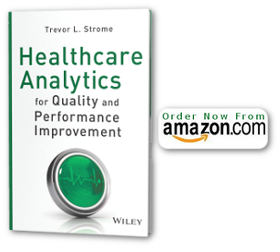An information feast or famine
Effective decisions require accurate and timely information, yet it is often the case that healthcare decision-makers and quality improvement experts don’t have the right amount of information. Sometimes there is no information available about a certain issue because it is not being collected or is not obtainable from source systems. Other times, there is seemingly too much information available. This is because it is not processed or filtered effectively from source systems, or because it is being over-analyzed and “sliced and diced” in ways that actually reduce its utility to decision makers.
With critical healthcare decisions that need to be made, how is it possible to filter out extraneous information to get to the core of what you need? More importantly, how do you determine what needs your attention and what changes will actually have an impact?
When trying to improve organizational performance, it is important to carefully pick the key processes and variables on which decisions will be made. Much like when improving your golf swing, there are usually only one or two factors that are truly critical to significantly improving performance, to improve in healthcare you need to focus on the key factors that will determine your improvement.
Knowing what you need to know
In healthcare, there is often no shortage of data in which to drown. In fact, having too much information masquerades as doing something about a problem – sort of like somebody who “appears” to be busy without being productive at all. With modern analysis tools it is possible to determine ratios, intervals, and variances for an unlimited number of points related to the operation of your department, program, or unit. But what is really important to understand? For example, which information is more actionable:
- ratio of inpatient length of stay to outpatient length of stay in an emergency department, or
- time between bed occupancies
The second metric is more actionable because if the mean time between bed occupancies is increasing, there are several possible reasons, including beds taking longer to be cleaned, or increasing time for beds to be filled once cleaned. Either way, the indicator was able to pin-point where possible problems in patient flow occur.
Consider the “80/20 Rule”
Always keep in mind the Pareto Principle, which states that 80% of inefficiency is caused by 20% of causes. Monitoring dozens of indicators and metrics because they’ve accumulated from legacy reporting systems over the years doesn’t mean that your organization is being effectively monitored and that improvement is likely to occur. In fact, too many indicators make it difficult (if not impossible) to effectively monitor and improve performance. An effective analytics program supports effective decision making by providing accurate, timely, and readily available information on the most important indicators used to manage your organization.

{ 0 comments… add one now }